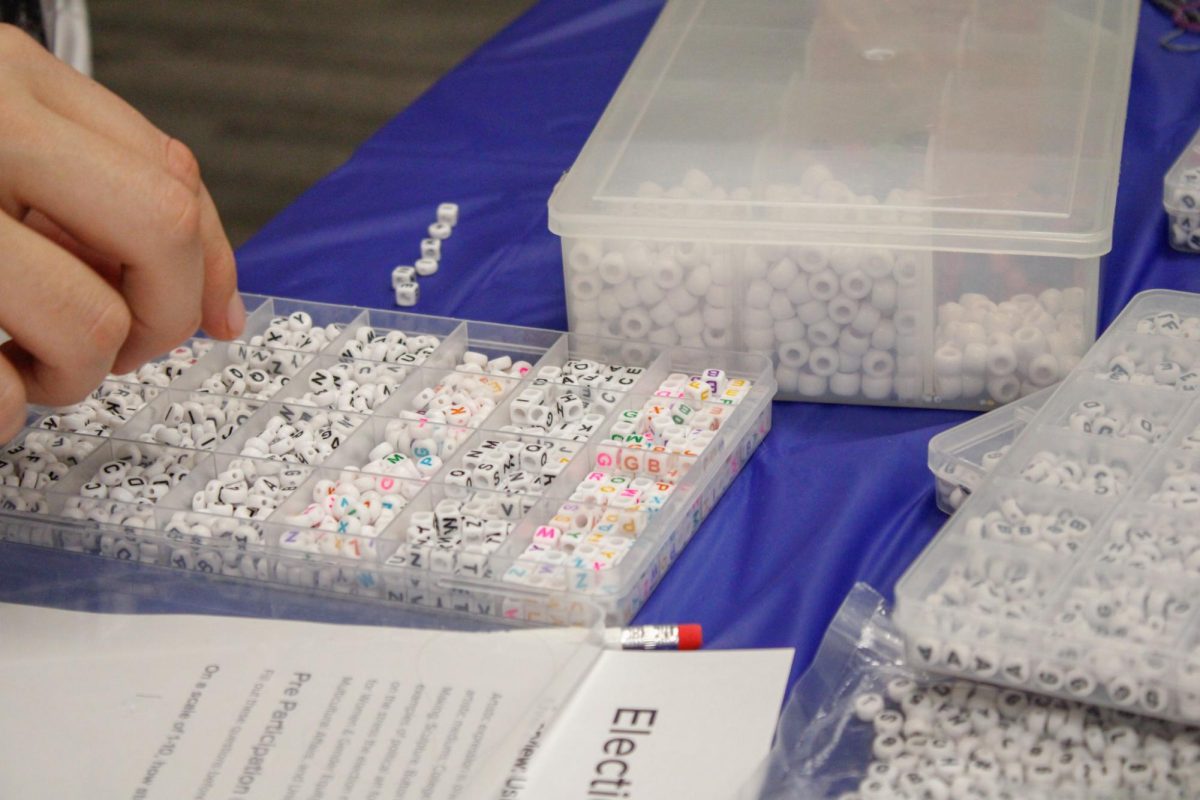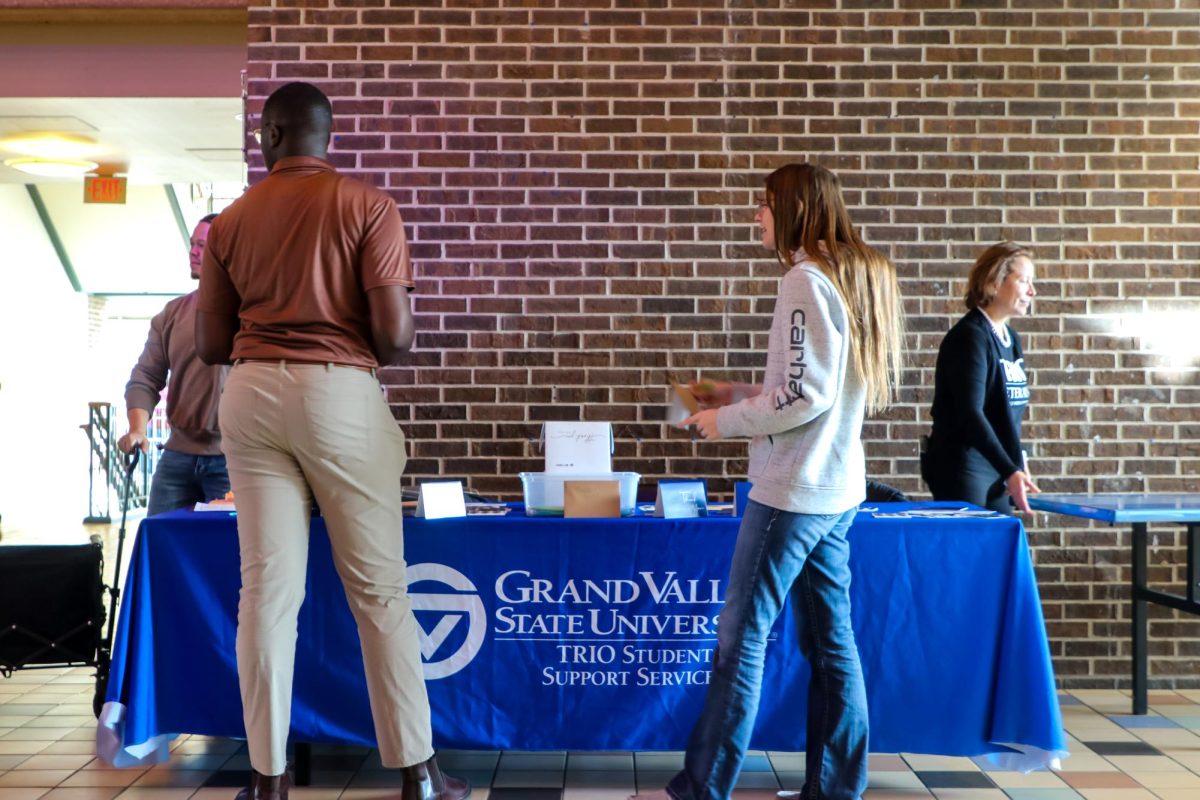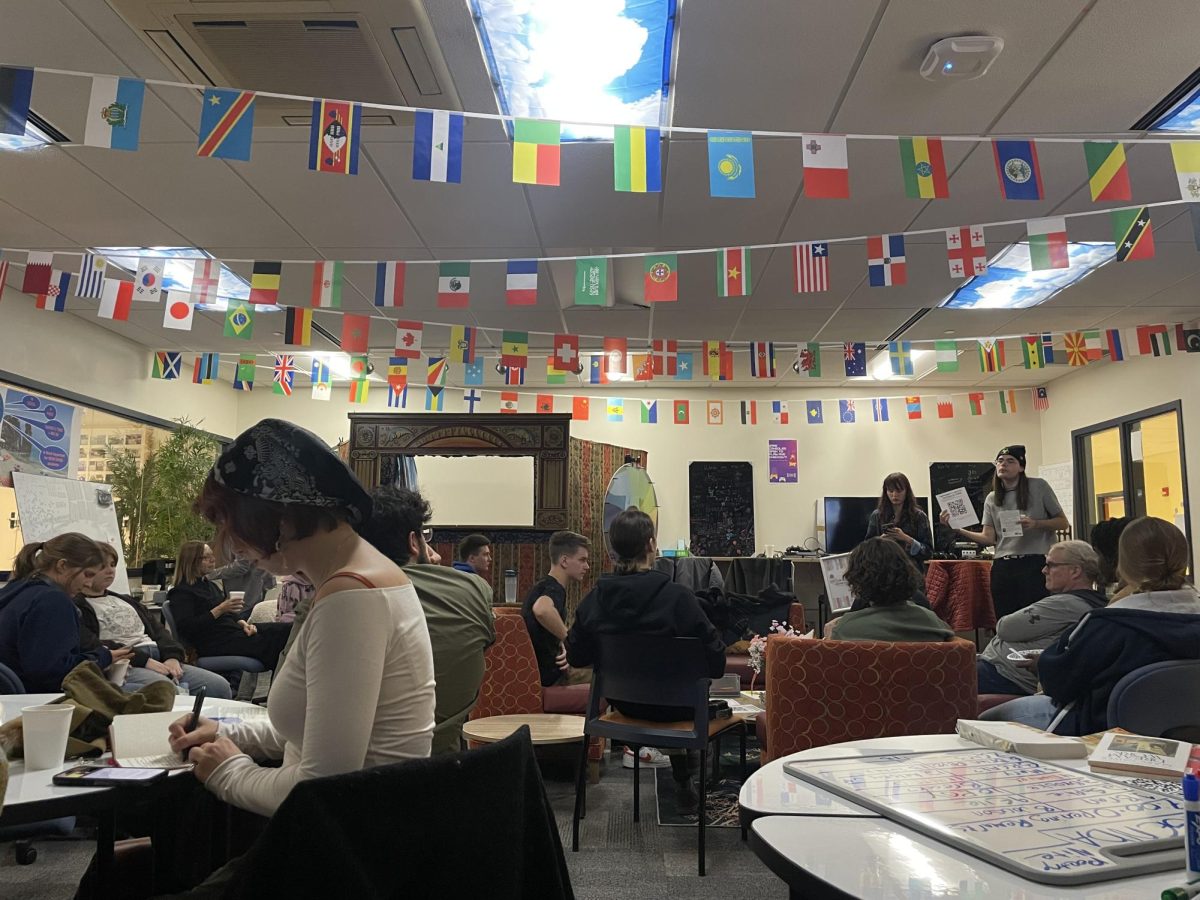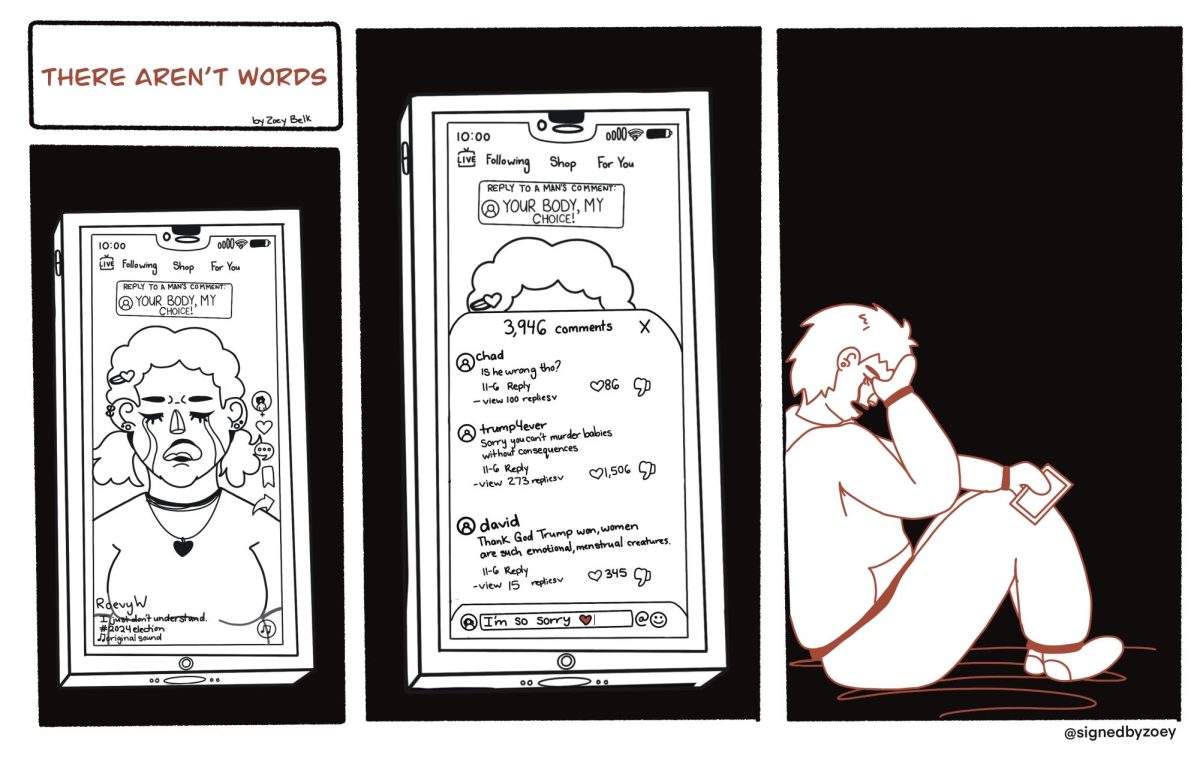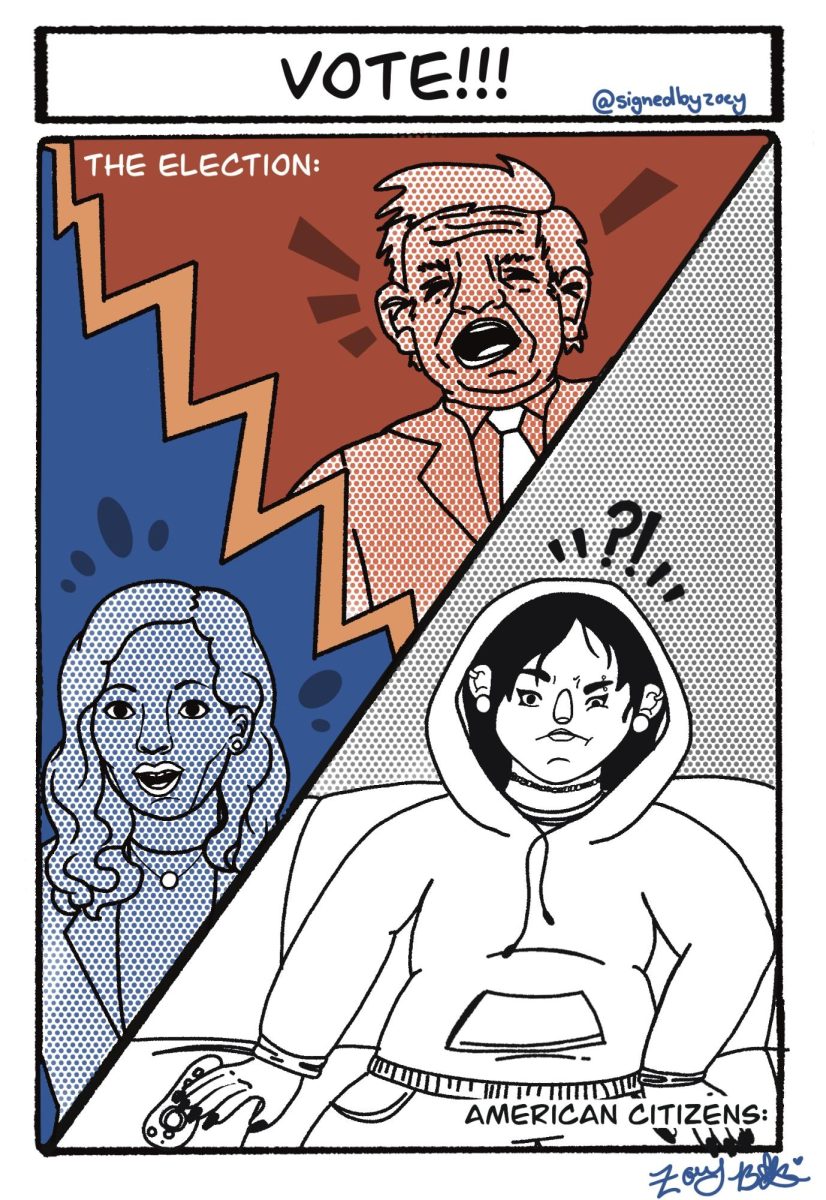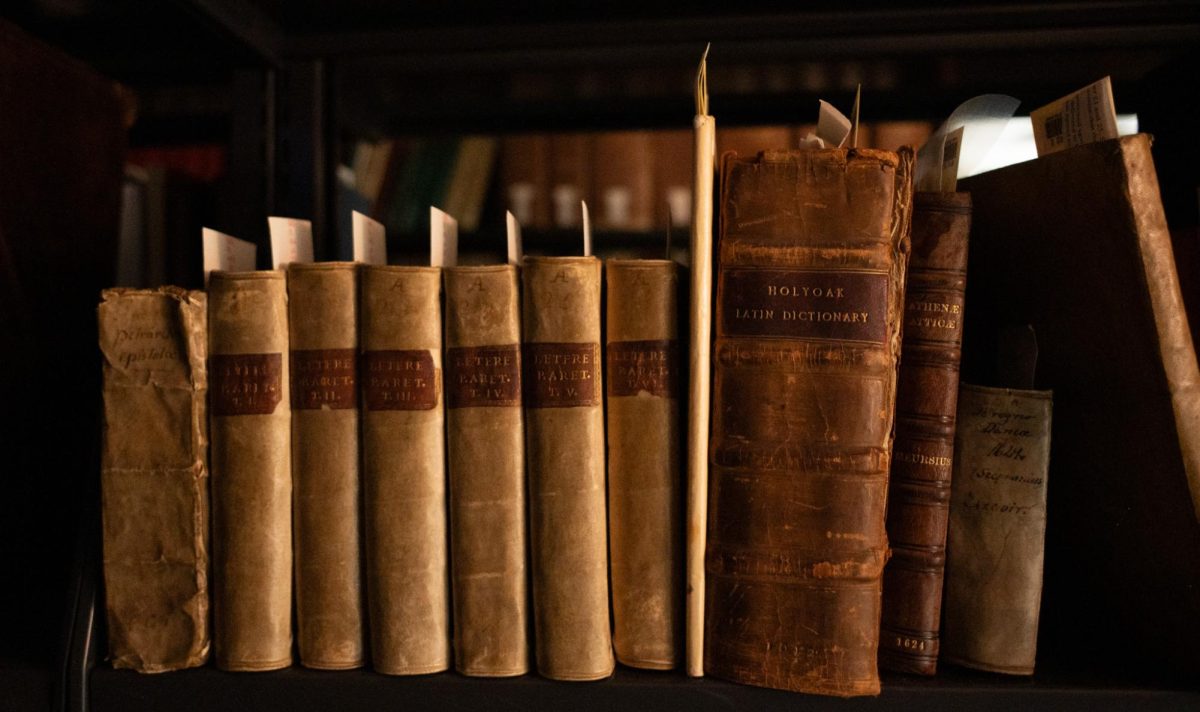Majora Carter inspires hope, possibility

GVL/Bo Anderson Majora Carter delivers the keynote speech as part of the Martin Luther King Jr. celebration at Grand Valley on Thursday.
Jan 27, 2013
About 200 members of the Grand Valley State University community listened Thursday as urban revitalizationist Majora Carter shared her story of growing up and why she developed a passion for a historically red-lined area.
“‘The Burning Bronx,’ which was sort of infamous in my childhood, symbolized the arson that ran rapid in the South Bronx,” Carter said. “Landlords were torching their buildings to collect insurance money because there wasn’t any type of investment money coming in to support them. But despite all that, these were the playgrounds, and it was very much of a community.”
An abundance of waste facilities, power plants, diesel trucks, obesity, diabetes and one of the highest childhood asthma hospitalization rates in the country are only a few of the problems that are concentrated in the South Bronx areas.
By happenstance, Carter landed back in the South Bronx after her completion of graduate school and recognized these problems that needed attention.
“I really felt that we needed to not only be fighting against something, but it’s also really important to be fighting for something,” Carter said. “What do you really want to change?”
Carter got her wish by receiving what she considered a bizarre proposal to restore the Bronx River.
As her first project, she received a $3 million investment to turn an illegal dump into the Huntspoint Riverside Park. Now, next in line is the 11 mile South Bronx Greenway which is a $1.25 million federal transportation proposal and largest infusion of federal planning money to come into the neighborhood for a positive purpose.
“The thing that I’m most proud of is developing and understanding that when you plan and start working to support a community, you have to figure out ways to make sure that you are supporting the people in it so they can fully participate in its development,” Carter said.
With this thought, Carter created the country’s very first green-collar job training and placement system called B.E.S.T (Bronx Environment Steward Training). B.E.S.T focuses on helping people understand the value of themselves and their community. It also strives to help the community understand that it can play a positive role and contribute to society in a way that supports its residents.
“Specifically to Dr. King, I thought he might be a little disappointed by the way things have worked out since his death,” Carter stated. “Until the end of his days, he was really pushing the poor people’s movement. It was about poverty. Regardless of your color, when you are embedded in that world, it just has everything to do with how you live your life. This hit me like a ton of bricks as I started doing this work, and I realized there are South Bronx’s all over the country that have the same type of inner-city problems.”
Carter said she is determined to raise the bar for what passes as economic and housing facilities in the South Bronx community. She ended her speech with a closing note that portrayed another personal hope for the nation.
“This is just the next step,” she said. “Listen, we’ve seen enough tribute to all of our collective failures. Now we can start building some monuments to hope and possibility.”
[email protected]















